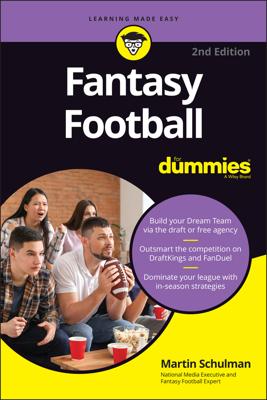Scoring is always an offense’s ultimate goal in an American football game, but to score, you have to move down the field toward your opponent’s end zone. The offense uses various strategies for gaining yards and, consequently, a better field position.
Throwing a field position pass
When offenses face third down and more than 6 yards, which is known as third-and-long, the safest play is for the quarterback to throw to a running back who’s underneath the coverage of the defensive secondary. Why? Because in such situations, the defensive secondary, which is aligned well off the line of scrimmage, is always instructed to allow the receiver to catch the ball and then come up and tackle him, preventing a first down.
Early in the game, when your offense is down by ten or fewer points, you want to run a safe play on third-and-long, knowing that you’ll probably end up punting the ball. In other words, your offense is raising its white flag and giving up. That’s why this pass to the running back is called a field position pass. Maybe the back will get lucky, break a bunch of tackles, and gain a first down, but basically you’re playing for field position. The odds of beating a good defensive team under third-and-long conditions are pretty slim.
Opting for possession passes
Most of the time, a possession pass is a short throw, between 8 and 10 yards, to either a running back or a tight end. The intent isn’t necessarily to gain a first down but to maintain possession of the ball while gaining yardage. Often, teams call possession passes several times in a short period to help the quarterback complete some easy passes and restore his confidence.
If the quarterback wants to throw a possession pass to a wide receiver and the defensive secondary is playing off the line of scrimmage, his best option is to throw a 5-yard hitch. A 5-yard hitch is when the receiver runs up the field 5 yards, stops, and then turns back so that he’s facing the quarterback.
Moving downfield with play-action passes
In a play-action pass, the quarterback fakes a handoff to a running back and then drops back 4 more yards and throws the football. The fake to the running back usually causes the linebackers and defensive backs to hesitate and stop coming forward after they realize that it isn’t a running play. They stop because they know they must retreat and defend their pass responsibility areas.
If neither team has scored and the offense is on its own 20-yard line, that’s a perfect time to throw the football. Some conservative offensive teams run play-action only in short-yardage situations (for example, second down and 3 yards to go). But play-action works whenever the defense places its strong safety near the line of scrimmage, wanting to stuff the run. Because the defensive pass coverage is likely to be soft, the offense has a good opportunity to throw the ball. And the defense shouldn’t be blitzing, which in turn gives the quarterback plenty of time to throw.

